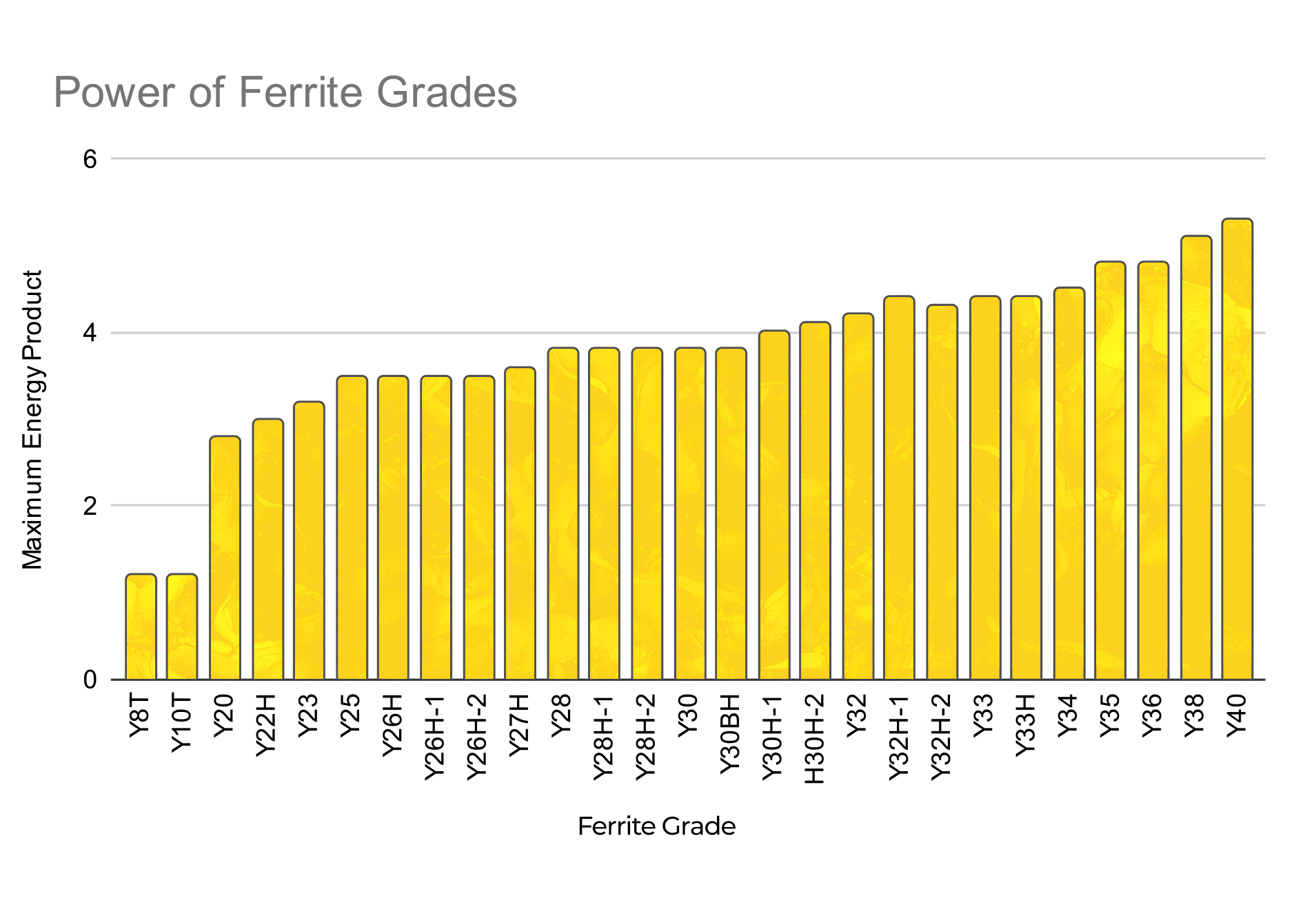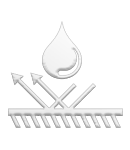Grades of Ferrite Magnets
Learn all of the available ferrite grades and properties below.
Ferrite Magnet Grades
Ferrite magnets, or otherwise known as ceramic magnets, are the most cost effective solution when looking for permanent magnets. These are the most common magnets that are used for fridge magnets and are widely used for in brake systems, security systems, sensors and speakers.
The benefit of ferrite magnets is they are not easily demagnetised, they are highly resistant to corrosion and the production process is simple. This means mass manufacturing high quantities is straight forward.
There are 27 different grades of ferrite magnets which have their own unique properties. The grade of a magnet refers several characteristic changes, namely its magnetic strength, or how strong the magnetic field is. The grade always starts with the letter Y – the bigger the number next to the letter, the stronger the magnetic field.

What Are The Most Common Ferrite Grades?
Ferrite magnets can start as low as Y8T (MGOe 2-2.35) and go as high as Y40 (MGOe 4.4-4.6) . Y30 is the most commonly used grade of ferrite / ceramic magnets due to it’s higher magnetism, low cost and excellent coercivity.
All Ferrite Grades
Y8T, Y10T, Y20, Y22H, Y23, Y25, Y26H, Y26H-1, Y26H-2, Y27H, Y28, Y28H-1, Y28H-2, Y30, Y30BH, Y30H-1, Y30H-2, Y32, Y32H, Y32H-1, Y32H-2 Y33, Y33H, Y34, Y35, Y36, Y38 and Y40.
(MGOe 0.8 – 4.6)
What Is The Strongest Ferrite Grade?
The strongest grade of ferrite magnet is Y40 which have a Br (KG) of 4.4-4.6. Ferrite magnets have the weakest magnetism out of neodymium, alnico and SmCo magnets but they are the most cost effective.

Technical Definitions
Coercive Force (Hc) The measurement to eliminate the magnetic field when exposed to an opposing magnetic field. The higher this unit, the more resistance a magnet has to demagnetisation.
Intrinsic Coercive Force (Hci) The required strength of the opposing magnetic field to completely demagnetise a magnet to the value of 0.
Maximum Energy Product (BH)max – This measurement shows the magnetic density of a material that produces a magnetic field. This measurement establishes how powerful a magnetic field is and it’s often abbreviated as MGOe.
kG (KiloGauss) – 1 Kilogauss = 1000 Gauss. Gauss is the unit of measurement that measures magnetic induction.
T (Tesla) – 1 Tesla = 10,000 Gauss. Tesla is the unit of measurement that measures magnetic induction.
Oe – Oersted – A measurement of magnetic field strength.
kA/m (kiloampere) – 1 kiloampere = 12.56 oersted – A measurement of magnetic field strength
MGOe (Maximum Energy Product) – The unit of measurement that refers to the strength, power or magnetic density of a magnetic field.
kJ/m³ (Kilojoule per Cubic Meter) – 1 Kilojoules = 1,000 Joules – The unit of measurement for energy.








